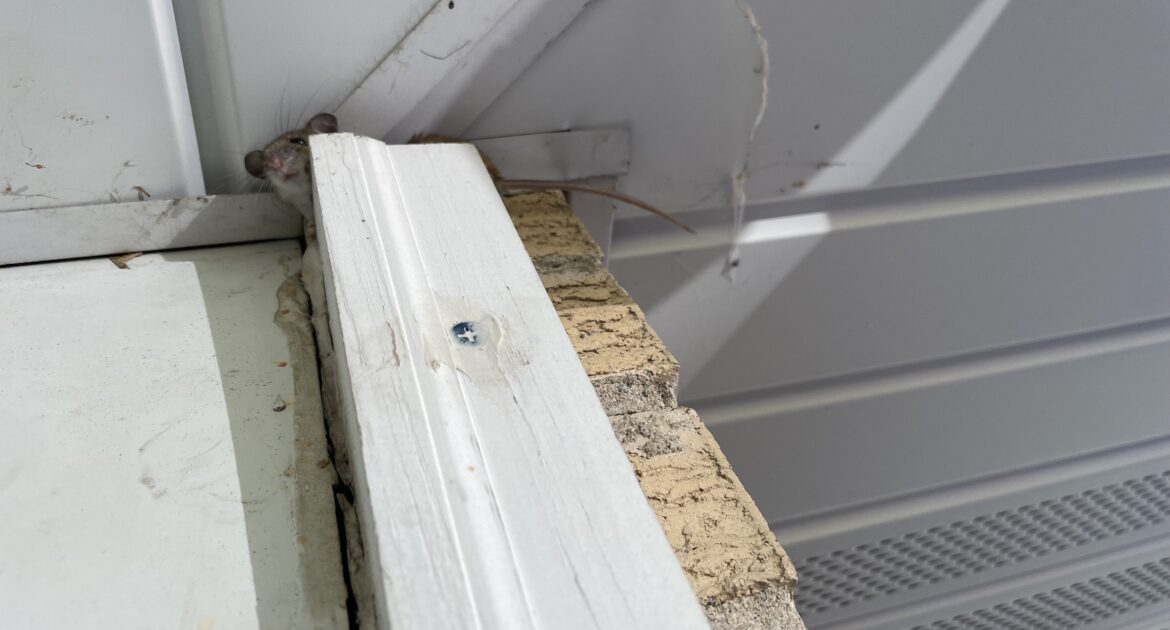A rodent infestation brings up many important questions, such as how the mice are getting in, how many mice live in a nest, and where the mice are hiding. Sometimes the biggest question is whether you have a mouse infestation at all. Mouse infestation signs can be subtle, especially in the beginning.
Nevertheless, it is important to pay attention to the signs of mice in the house. An infestation of mice can be a serious problem. Any time you see any signs of wild animals in your home, you should call Skedaddle to assess your property and determine whether the problem is mice or another type of wild animal.
4 Signs of a Mouse Infestation To Watch For
Mice are small, nocturnal animals that fear humans. They want to keep sharing your living space and the warmth and food it offers. However, they also want to avoid detection, so they avoid coming out in the open. You are most likely to see them along baseboards, behind furniture, or amongst clutter. Look for signs that can clue you to their presence before you see them.
1. Foul Odors
Mice urinate and defecate whenever the need strikes them. Their excrement can give off a strong, ammoniac odor. The more mice you have, the stronger the smell can become. The smell is usually stronger the closer you get to where the mice nest. However, if the mice get into the ventilation system, it can spread the odor all over the house.
Another source of foul odors is a rotting mouse carcass that is trapped behind the walls or beneath the floorboards. The more mice in the house, the greater the chance that a mouse will die in your home.
These foul odors may signal a much greater danger. For example, the smell of a dead mouse comes from the growth of bacteria as they feed on the carcass and break it down. Some of these bacteria may cause disease.
If you have a dog or cat, it may smell the rodent urine before you do. Pay attention if your pet suddenly starts sniffing around an area in which it previously seemed to show no interest.
2. Visible Mouse Droppings
Mice often urinate or defecate while they are eating, so you may find their droppings on counters or in cupboards where the mice have found scraps or crumbs to feed on or have chewed through food packages. Mouse droppings are small, dark brown, roughly cylindrical pellets with tapered ends.
Mouse droppings may be infected with hantavirus, which causes severe, sometimes fatal, respiratory illness. It is better to have a professional clean up the droppings. Amateur attempts may send aerosolized viruses into the air where you can breathe them in, which is how the disease spreads.
3. Scratching or Scurrying Noises
Mice are most active at night when, typically, the house is quiet. This can make it easier to hear them as they scurry along. Mice typically make a scratching sound when they move. You are likely to hear these sounds coming from these common mice hiding places:
- Behind walls
- In cabinets or cupboards
- Beneath floors
- In the ceiling or attic
4. Gnaw Marks
Mice spend a great deal of time gnawing because their front teeth never stop growing. They’ll chew on any hard surface, including baseboards and furniture legs. Rodent gnawing is not only annoying; it can be dangerous. Mice like to chew on electrical wires, stripping them of their protective coating. The bare wires can spark a fire. If you happen to make contact with a live wire, it can give you an electrical shock.
Call Skedaddle if You See Mouse Infestation Signs
Typically, you’ll notice signs of an infestation before actually spotting the rodents themselves. It’s crucial not to ignore these signs, as they can indicate a growing mice population in your home. By taking swift action at the first indication of mice, you can prevent them from multiplying and causing further damage. Don’t hesitate to reach out to Skedaddle for expert assistance in dealing with mice infestations.




